Review of Ingmar Bergman`s The Faith Trilogy
Introduction
This set is not in any real terms a `trilogy`. They are held together as a conveniently marketable group only because each has religious faith (or lack of it) and search for meaning as a central, driving theme. The other is their chronology. Each comes from arguably Bergman`s most creative period, the early sixties.
What is certain is that they are an impressive group - beautifully shot and each with incredibly powerful performances from their respective casts. Also, it may be worth adding that these films do more to question blind faith than to encourage it. They are not necessarily a great gift for those heavily religious relatives, unless you intend to encourage them to question their beliefs. Though their conclusions are not entirely clear (singularly or grouped) there can be no doubt that the questions they raise betray Bergman`s own existential view. This obviously pained him. His own father was a priest, and you sense that Bergman would like to take comfort in the knowledge that life has some purpose and yet these films do little to suggest that he actually believed that it had.
Despite this slightly bleak world view, there is nonetheless an incredible beauty to these films. Each frame looks carefully considered and often tightly choreographed with actors positioning themselves perfectly for a particular camera moves. The movie `winter light`, for example, perfectly reflects that low Nordic twilight`s effect room light. Also - see the incredible technical brilliance of the train journey at the start of `The Silence` where the main protagonists are perfectly reflected in the window through which we can see an industrial landscape passing by. Anyone even remotely interested in the technicalities of film-making will delight in these examples.
THROUGH A GLASS DARKLY
Faro, a remote island of the Swedish coast, features heavily in Bergman`s output, and was even the subject of a very literal documentary (reviewed elsewhere on this site) by Bergman who made the remote and bleak island his own home for a time. `Through a Glass Darkly` is set on the island and reflects the remote atmosphere perfectly. (This was actually Bergman`s first film shot on the island). David, a writer and `cultural explorer` has dropped by for a rare visit to his family; Karin (his daughter) who is suffering from an incurable mental illness; her husband Martin, a dour individual who seems to have Karin`s best interests at heart, and the younger brother/son, Fredrik, who seems to have problems of his own - which seem to arise from adolescent sexual frustration.
Though their first evening together seems to go well, this small group seem to be putting a brave face on things. Karin`s madness begins to manifest with her believing that the old house they are staying in contains a number of spirits awaiting the literal arrival of God from behind a cupboard door.
David seems to be suffering from writer`s block though seems to find some satisfaction carefully recording his daughter`s breakdown in a diary, as if he is gathering material for a book. When his book is discovered it is unclear to everyone (including himself) whether this exercise is a selfish one, or whether it is some attempt to understand or come to terms with her condition.
In the meantime, Karin` s husband Martin goes out fishing with David and accuses him of taking advantage of his daughters terrible condition. In their absence, Karin seems to descend into a bout of madness and it`s implied that she ends up sleeping with her sexually frustrated brother.
If this all sounds a bit heavy going then it`s only as a result of my own ham-fisted telling of what actually evolves over 90 minutes in what is an incredibly engrossing film. If the film seems a little surreal or dark at times then I`m sure this was entirely intentional and there is a general pacing and attitude that you can`t help feeling must have informed many of today`s creative film-makers, including Lynch in particular.
It`s also an outstandingly beautiful film with lovingly shot high contrast monochrome adding to the atmosphere of the piece - with cinematographer Sven Nykvist complimenting Bergman`s vision superbly.
It`s difficult to imagine making a film with such a small ensemble of actors (four to be precise) but it all works incredibly well.
The soundtrack is really magnificent too with no music but strange off camera sounds and occasional phasing / echo on the dialogue and spot effects that adds to the slightly super-reality of Karin`s schizophrenic vision. (Having said that, I noticed that all three movies in this set also had audible phasing and echo so I may be waxing lyrical about unintended single-frame phasing between the two channels of the faux stereo mix!)
WINTER LIGHT
I found `Winter Light` perhaps the bleakest of all three films with its unrelenting take on the pointlessness of religious belief. Again set in a fairly remote Nordic village, the film centers around a widowed Pastor (the same actor who played the Father in `Glass`, Gunnar Bjornstrand) who seems to descend into disbelief, despair and self-hatred. It`s worth remembering that Bergman`s father was also a Pastor and that Bergman, a terrible critic of his work, conceded to actually liking this film as he felt it was amongst his `purest` and least compromised. (As he tells in the introduction to the film). It was probably one of his most satisfying too as it clearly was a very personal exploration of the weaknesses of religious faith.
Pastor Thomas Ericsson, a lonely widower, looks after a small congregation despite the fact that his own world seems to be collapsing underneath him. Even in the early ceremonies, we see him voicing learnt phrases in his sermons and prayers, devoid of any enthusiasm or passion, merely going through the motions. He has a devoted admirer in the form of the slightly bookish and needy local school teacher who is clearly besotted with him, though he remains slightly embarrassed by the whole affair.
Marta, the teacher, seems to recognize the cold emptiness in him and in a letter coolly analyses his life and their relationship, accurately surmising that his faith has gone. After reading her letter, Bergman delivers another blow as if to accentuate the sheer bloody pointlessness of it all. A member of his congregation, Jonas, comes to him for help. Jonas finds himself depressed by the prospects of man destroying himself through nuclear war, and all the hate and suffering in the world. Instead of rallying him around, Thomas concedes that he too is despairing. As a result, we learn that Jonas has blown his brains out immediately after their meeting, leaving a pregnant wife and several small children to fend for themselves. Thomas has to break the sad news to his family and this immediately after he has tried to break Marta`s spirit with cruel and unkind words.
Following this terrible day, we see Thomas come back to the Church to deliver an evening service to a virtually empty church.
Despite being a deeply depressing piece, about a man who is trapped by his own circumstance, who has invested his whole life in a cause that he now finds may be a false one, there is much in the film to admire. Once again, the lighting and cinematography is superb. Apparently actor Bjornstrand was very ill during shooting and this is reflected in the film with him looking extremely pale and frequently breaking down to fits of coughing which merely add to the despair and hopelessness of the piece.
THE SILENCE
In his introduction to `The Silence`, Bergman claimed that when his financial backer first viewed the film he`d asked Bergman how on earth he thought they would make their money back. After all, barely a word is uttered in the film. (Bergman regretted leaving as many as thirty-eight words in, feeling that most of those included were superfluous). However, foreign distributors, seeing the potential of majoring on the nudity to be found in this `art house film`, offered great sums to distribute it and it became one of Bergman`s greatest successes of the period.
The film is set in what appears to be a very industrialized east-European city, though we never find out where. All we know is that the main characters don`t speak the local language so most communication between them and residents of the city they visit are very visual.
Two sisters and a young boy are traveling by train to an unknown destination. One of the two (Ester) seems to be very unwell so they stop at a hotel part way through their journey. Anna is then left in a room with her young son who takes to wondering around the corridors of the hotel brandishing his wild-west style toy gun. Much of what he sees and finds is filmed from his POV, from low angles, often from behind chairs and so on.
To add to the surrealistic air of the film, the hotel also hosts a number of performing dwarves form a local theatre, perfect for the boy to play with.
Ester`s illness gets worse, and upset by her sister`s promiscuity with a world outside that she cannot be a part of, the two sisters argue, with the sound of thundering tanks and military vehicles passing in the streets below, adding to the already claustrophobic atmosphere.
There is clearly a tension between the animal physicality of Anna, and the more cerebral, considered world of Ester`s, each totally different from each other and possibly representing two sides of the same coin.
It`s a desolate and empty tale where the only light seems to belong to the boy who, despite all the trouble`s around him, seems oblivious to it all and therefore able to get the best out of it.
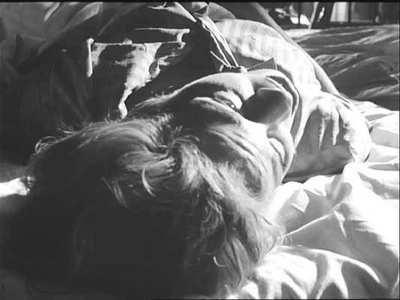
Video
Absolutely stunning. Flawless prints that have been expertly transferred, though with few extras and soundtrack options, seemingly on to single-layer discs.
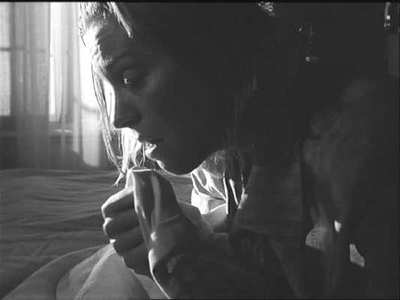
Audio
Strangely, each film seems to have a slight phasing or echo on occasion and it`s difficult to know whether this is stylistic intention (as I presumed to start with, actually thinking how clever and `Lynch-like` it was) OR just some miss-phasing between the two channels of faux stereo which seems more likely. It won`t spoil your enjoyment (and may even enhance the experience!) but maybe not something intended by Bergman!
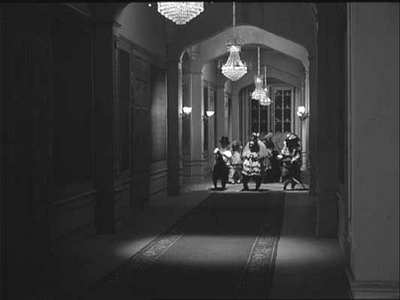
Features
Each of the films has a brief introduction from Bergman who is interviewed in a small viewing theatre. He comes across as a modest and unpretentious man who takes his art seriously indeed. Each introduction is very short which is unsurprising as Bergman was known as a man of few words.
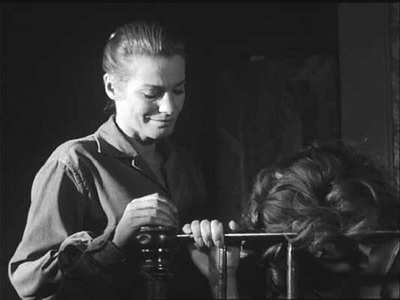
Conclusion
Bergman`s so-called `Faith Trilogy` is impressive indeed. Each of the three films is thought-provoking, powerful pieces that question the validity of religious faith in a world full of pain and uncertainty. They were never intended as a trilogy yet as they were made consecutively, each touching on similar themes, they have tended to gravitate towards one another in this marketable package.
The transfers are flawless and despite some audio anomalies (slight phasing) these remain impressive discs, surely every bit as good as the Criterion editions.
I personally enjoyed `Through a Glass darkly` and `The Silence` more than `Winter Light` which was relentlessly bleak, though all three are undeniably great achievements.
Anyone with even a remote interest in the craft of making films will find much to admire here as they are almost film-school case studies of technical brilliance with spectacular monochrome cinematography and inventive, tightly choreographed direction.
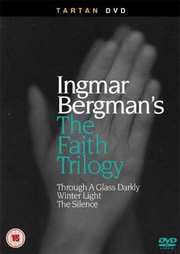





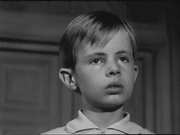
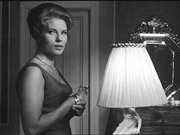

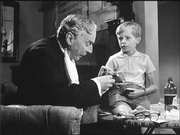
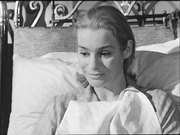
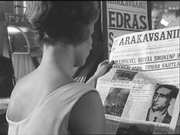
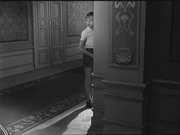

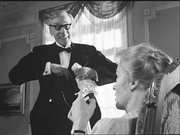
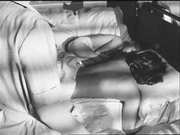

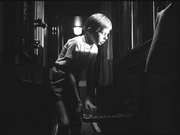
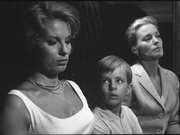

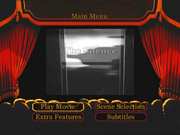
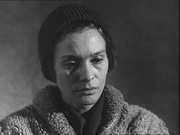

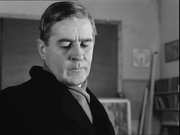
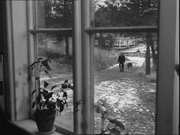
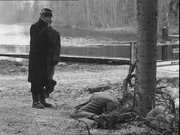

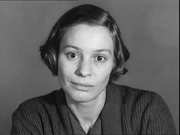
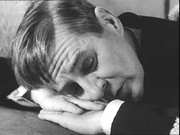
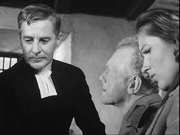
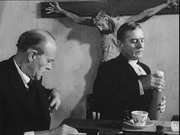
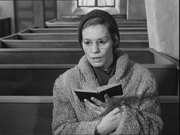

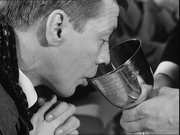

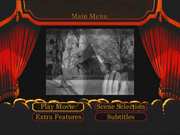

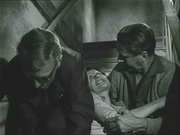
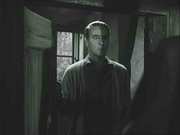
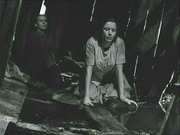

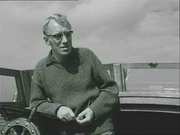
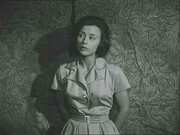
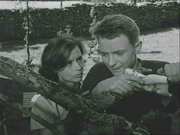
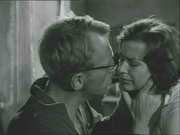
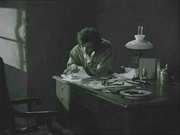

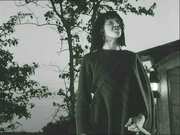
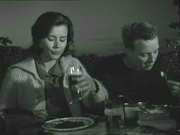

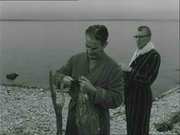

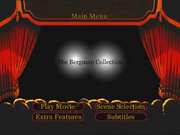
































Your Opinions and Comments
Be the first to post a comment!